Getting outside has changed our family. Michael has been climbing mountains for a few years and already knew all of this, but I've recently learned that the more time we spend outside the better we all are. I call our nature preserve the Great Tantrum Healer because it does just that. Tantrums just don't exist when we are out there (unless we forget food or good clothing, of course). If you want to read more about the benefits of getting outside, read this. But the benefits aren't just for Isla and Ewan. I can't quite describe it, but I feel like I'm transported back to childhood. I start feeling adventurous and alive like something nostalgic is coming back to me. And my anxiety literally leaves my body. Nature is freeing and calming all at the same time. It's really been great for us all to get outside and enjoy nature.
On top of that we are learning so much each time we visit the same place over and over again. I know naturalists and childhood psychologists recommend returning to the same spots in nature for a variety of reasons. It allows a child to become comfortable with their surroundings. This in turn allows for 1.) risky play, 2.) ownership, and 3.) observation.
1.) Risky play happens the more chances a child has access to a comfortable space. Climbing a tree or walking across a creek on slippery rocks is the kind of risky play we want to encourage. This exercises so many skills like calculating the risks, learning firsthand about things like gravity and momentum, measuring distances worth jumping or falling, making decisions which exercises the prefrontal cortex, building problem solving skills and executive function, and expressing thrill and adrenaline in a natural way. ALL of which stretch and grow their brains. Google risky play for more info.
2.) Ownership over the space produces a relationship with nature that won't exist if you aren't a part of it. Feeling comfortable in the same natural space allows children to take pride in their area, take care of that piece of earth, and know more about the changes and happenings in that area (more on that below). Scott Sampson goes into detail about this in his book, How to Raise a Wild Child. He expresses concern for our dying earth and the lack of care we show towards it. He explains that we can't expect our children to love something they know nothing about. If a child isn't familiar with nature, why would we expect them to have a relationship with it? If we want to protect this planet for our grandchildren and their children, it starts with change in our attitudes and actions. We have to be a part of the thing we want to change in the first place.
3.) Finally, observation. The more comfortable you are with the same natural space, the more likely you are to notice the changes within the space. Observation of our favorite natural space has been the coolest thing for all of us. We have been able to see the creek change from dried leaves with no water, to ice you could walk on, to a small trickle we could wade in, to a rushing river that would sweep you away. We've seen the ground change from crunchy leaves, to thick snow, to muddy paths, to dried ground with snake holes scattered all around. We've seen rain, snow, sun, and wind change the lay of the land. We've seen the flowers blooming and the bees returning to their work. We've witnessed woodpeckers making homes, snakes slithering at our feet, ants carrying food, hummingbirds searching for nectar, and squirrels building nests. We've even learned about things I had no clue about. Like identifying different kinds of birds (because Isla needs to know the exact bird), identifying and searching for mushrooms and lichens, learning about the different animals and plants, identifying different animal tracks in the mud, finding an array of beautiful wildflowers. We've tasted the sugar water dripping from the maple trees, observed two ducks near their nest, watched bees fly to and from their homes, touched an abandoned bird's nest, waded in the creek hunting for smooth rocks. The more time we spend in the same place, the more we are able to observe and learn. There are patterns to our local chunk of earth that we wouldn't know about had we not been so comfortable and regular in attending. And when we get home, Isla wants to know more about the things we've observed, so we extend that knowledge with books, videos, conversations, and information that we wouldn't have been interested in otherwise. I'm learning more about our backyard than I ever knew as a kid. Michael and I sometimes joke that we are breeding a little nerd when we expose her to these things, but we both feel we'd rather have a child interested in worms and ants than Elsa and Anna (she has no idea who they even are). I would much rather raise a human who cares about our earth and the creatures within it than a child who knows about the latest Tik Tok trend. But I digress.
1. Always bring more food than you think you'll need.
Being that active makes everyone hungry. I pack lunches the night before to eliminate one more thing we have to do to get out the door. And multiple snacks and waters for everyone. I even keep a bag of emergency granola bars in the diaper bag at all times. Just in case.
2. "There is no bad weather, only bad clothing", but when that clothing is bad, it's all REALLY BAD.
Nobody likes to be cold, wet, and miserable. We dress in layers so we can always shed if we get too hot. Isla and Ewan almost always have wools on underneath their clothes, even in warmer weather. That way, we can strip down to just wool if we need. I keep a set of clothes in the car for both kids, including socks and shoes. The other day we had an adventure in the rain and it was so nice to go back to our trunk, change into warm clothes, and carry on for another hour.
3. Let go of all fears and anxieties.
If you go into the situation expecting your child to come out dirty, then nobody is upset when it does happen. I firmly believe in not interrupting Isla. I let her explore, touch, climb, and do whatever she wants. I always know there are clean clothes, water, wipes, and baths back home (or in the car). Dirt and water do not hurt. I repeat, dirt and water DO NOT HURT.
4. When playing, I live by this standard: if they can do it, they can do it.
Meaning, if their bodies are physically able to do something, then it is allowed. If Isla wants to climb a branch on the tree and then jump off, I let it happen. If her body could safely get up the tree (without my help), then it can safely get down. I truly believe that. That's why risky play is so valuable. Pushing limits and finding out just what your body is capable of is such a good learning experience. I feel a little differently around "man-made play spaces" such as a playground where the limitations might be more unnatural for her body (say like, steps to go up, but a ledge with a slide for going down). But in nature, if she finds an 8 foot drop off, then I trust she will navigate it in an appropriate way. (If that concept scares you, read about the cliffs the Scandinavians encourage their children to play on).
5. Let wandering and free exploration lead the adventure.
Child-directed hikes are a cool concept. It's where the child gets to set the pace and time for the hike. If they want to stop and observe a flower for 20 minutes or sit and watch the clouds for an hour, then let them. There is no agenda or expectation behind the day. (One time we never left the parking lot of our Nature Preserve. The rain and worms were just too interesting!) This also means, leaving me from time to time. I also live by this standard: if I can (safely) see you, then you can do what you want. Meaning, if we are in a safe space (i.e. not a parking lot) then I think wandering away from me is not only fun, but very beneficial. Learning away from mom is a good thing. Obviously, you need to remain cautious and safe, but hovering and directing a child can almost be just as harmful. And as Isla and Ewan get older, I will encourage even further wandering.
6. Exploring new places is really fun, but returning to the same outdoor spot is beneficial.
It could be a nature preserve, a walking trail, a park, or your own backyard. Maybe sometimes it seems you have to go to nature, when really it's right outside our doors. A ladybug on the sidewalk can be just as fascinating as the ocean.
7. When in doubt, go outside.
It is so, so, so healthy. Tantrums and bad attitudes disappear, heart rates slow down, oxygen levels increase, anxiety dissipates, immunity is strengthened. There are hundreds of studies that have proven being outdoors is good for your physical health (like helping to decrease diabetes, heart disease, cholesterol, chronic stress, and insomnia) and mental health (decreasing or eliminating depression and anxiety). Babies to the elderly and everyone in between can benefit from being outside. Whenever we are feeling cooped up, everyone is at each other's throats, I'm going to lose my mind, and we are feeling down, going outside literally always solves the problem. Erin Kenny (an author and leader in Forest Schools) wrote, "Children cannot bounce off the walls if we take the walls away". I wonder how many problems in schools could be solved if we just used outside more often.
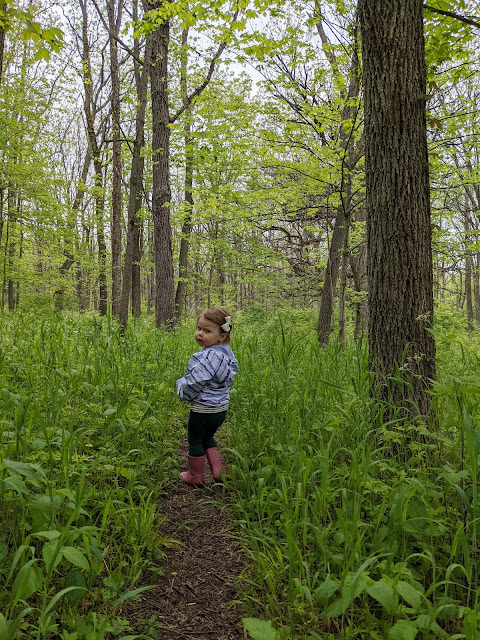



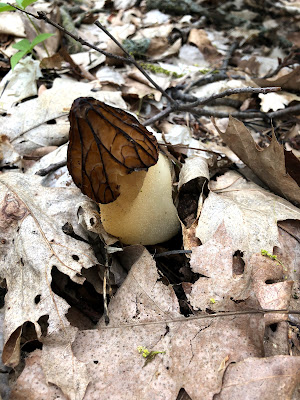




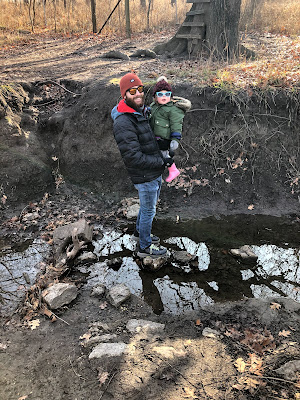





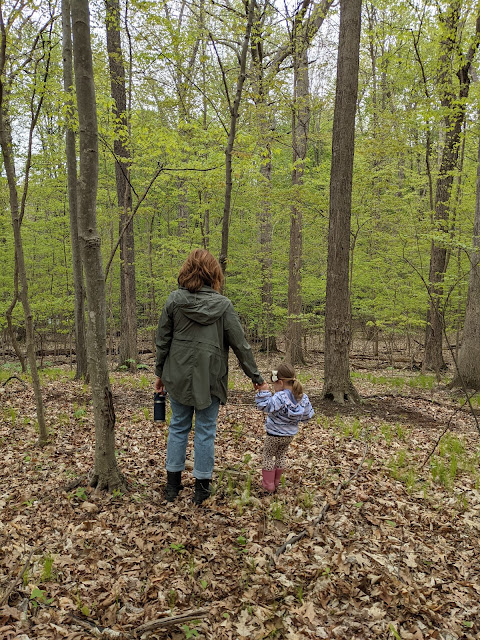
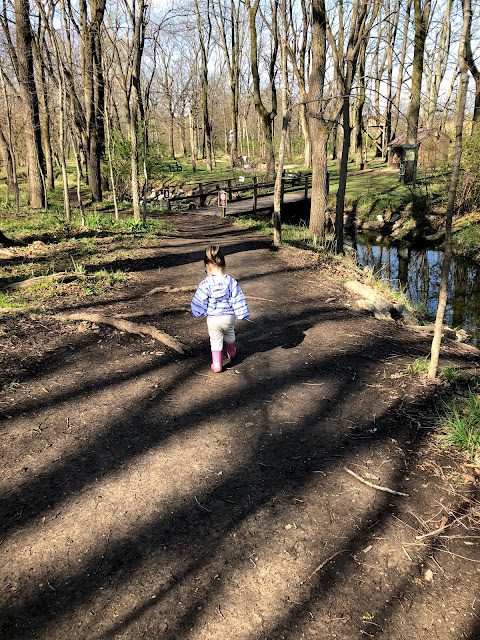
I don't have kids but I love these for myself! I seem to have trouble finding the time to get into nature. When I get out of work I don't feel like driving to a park or anything.
ReplyDeleteGo into your backyard then! You have a wonderful yard to spend time in :)
ReplyDelete